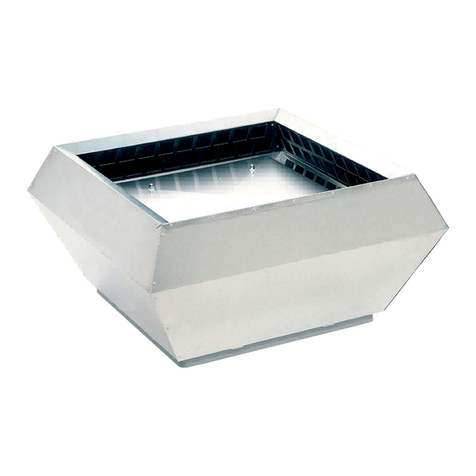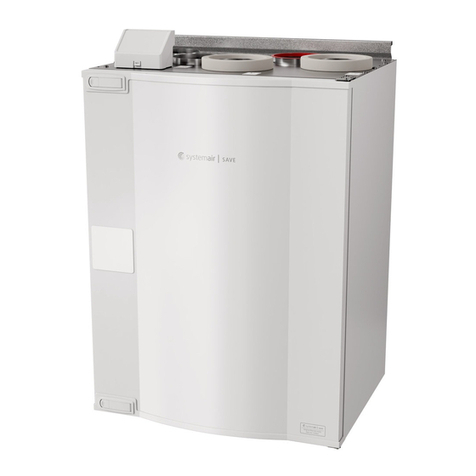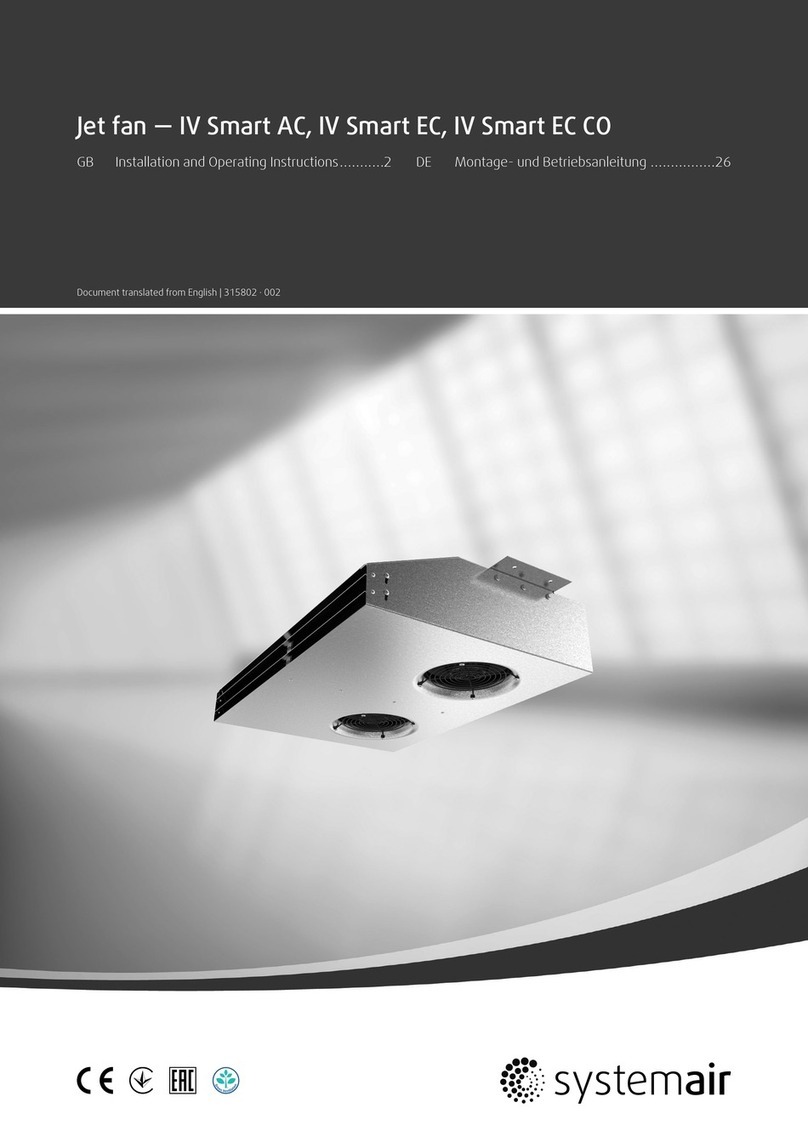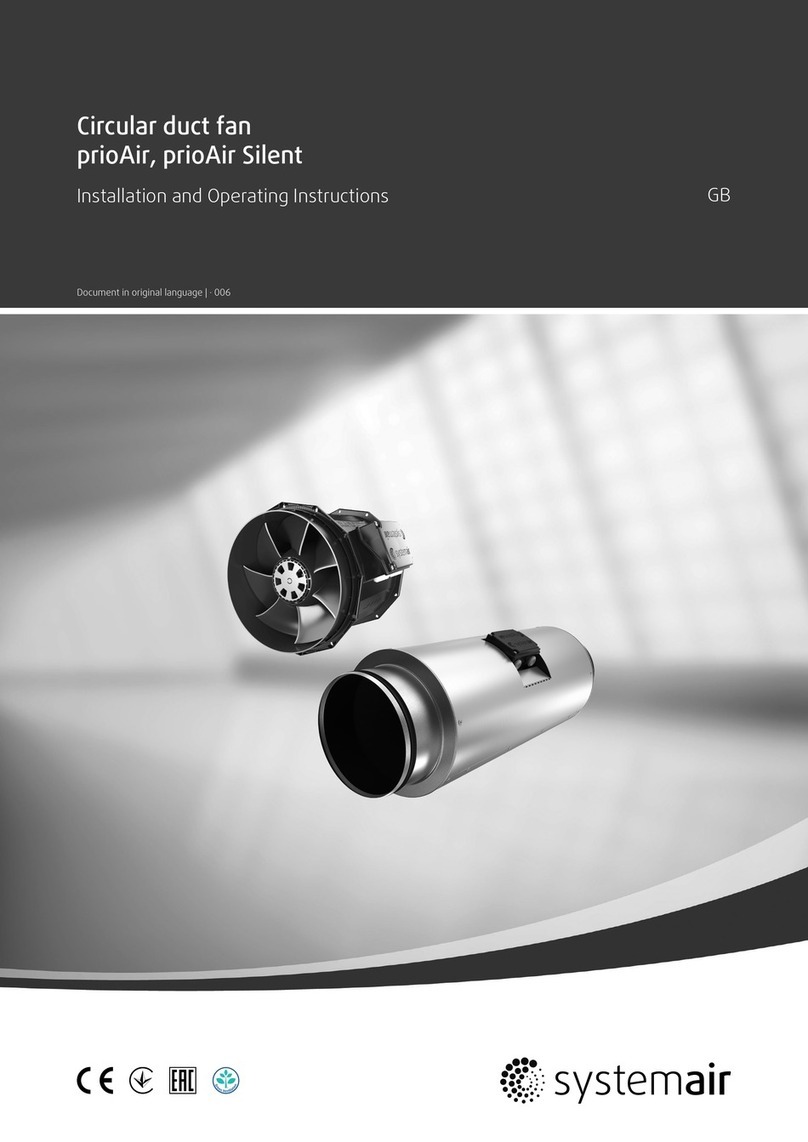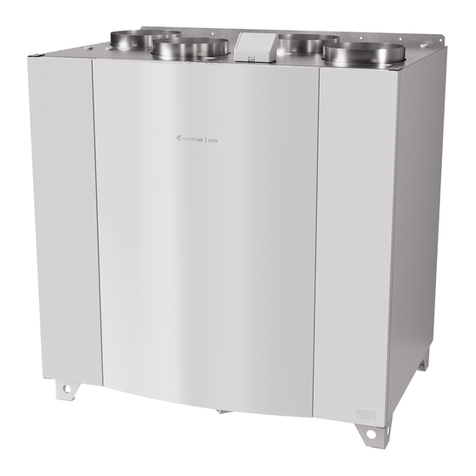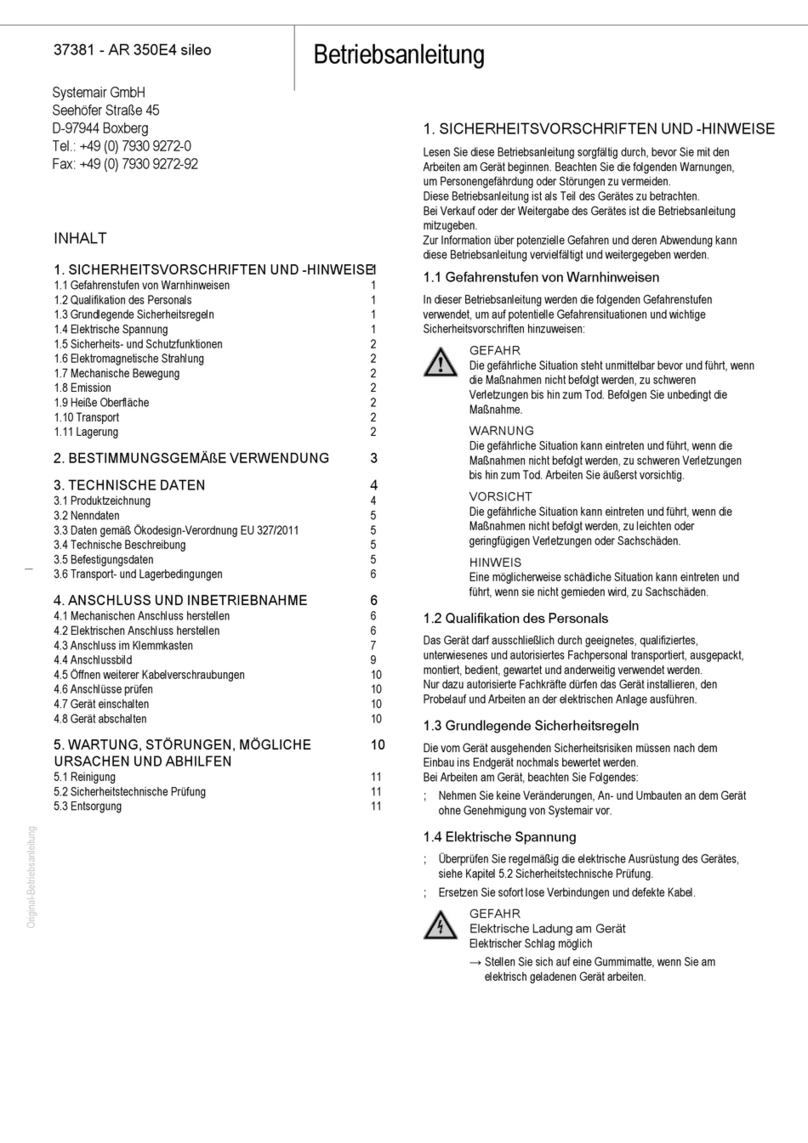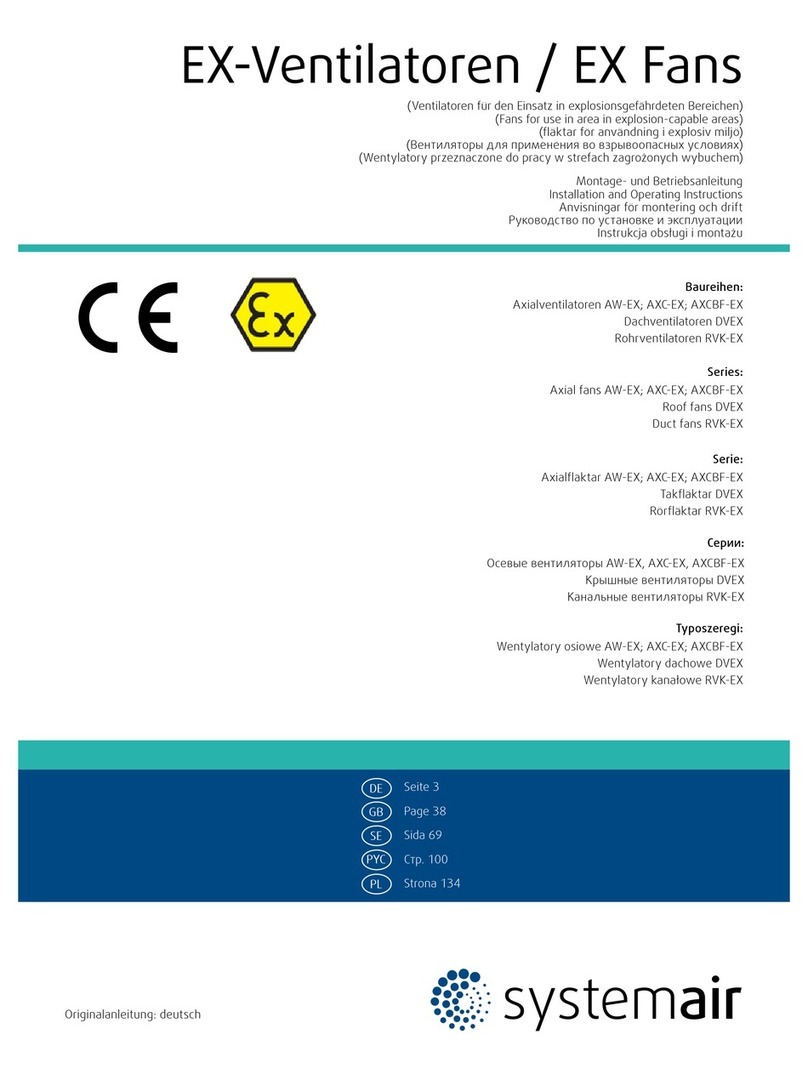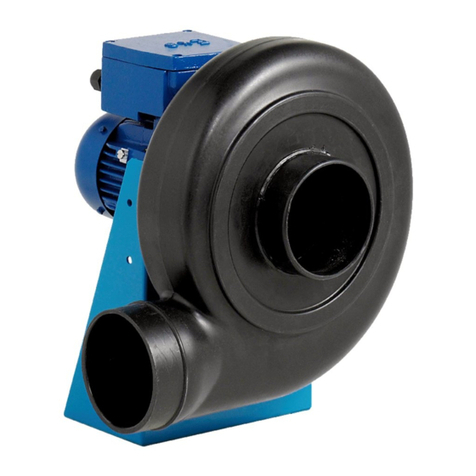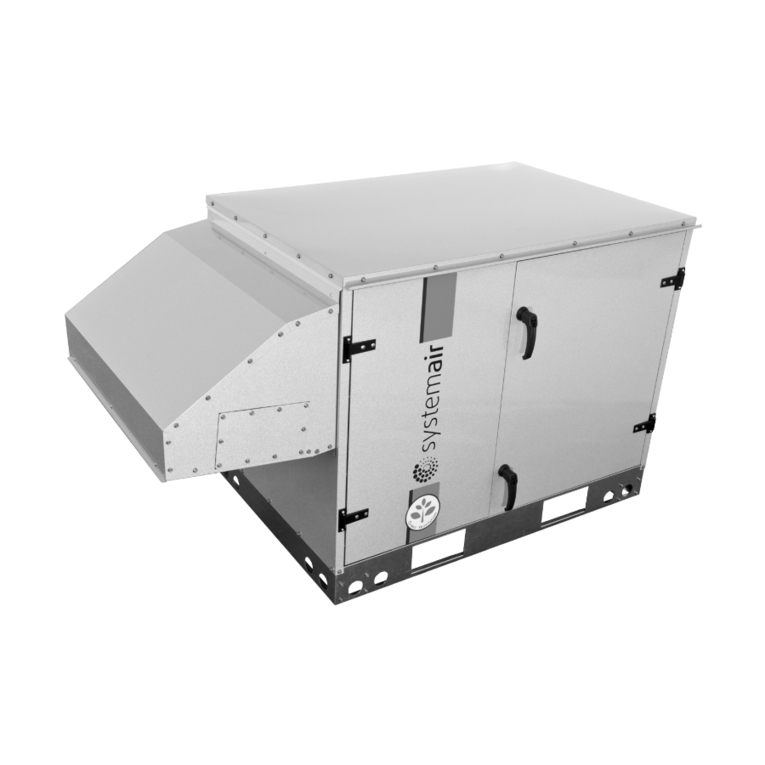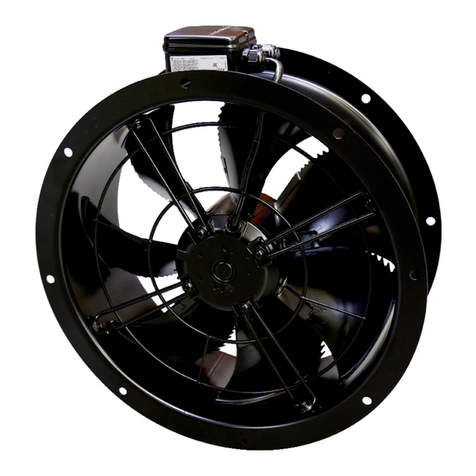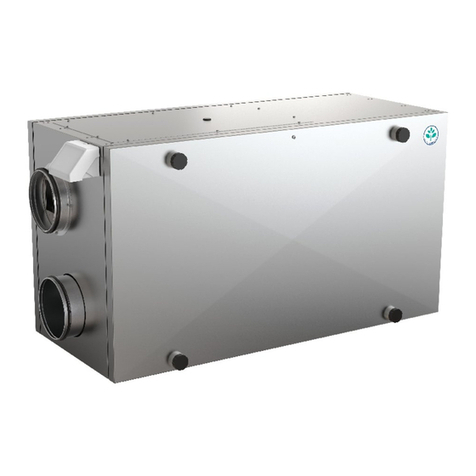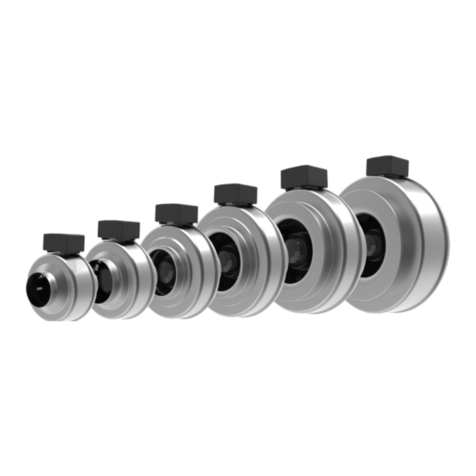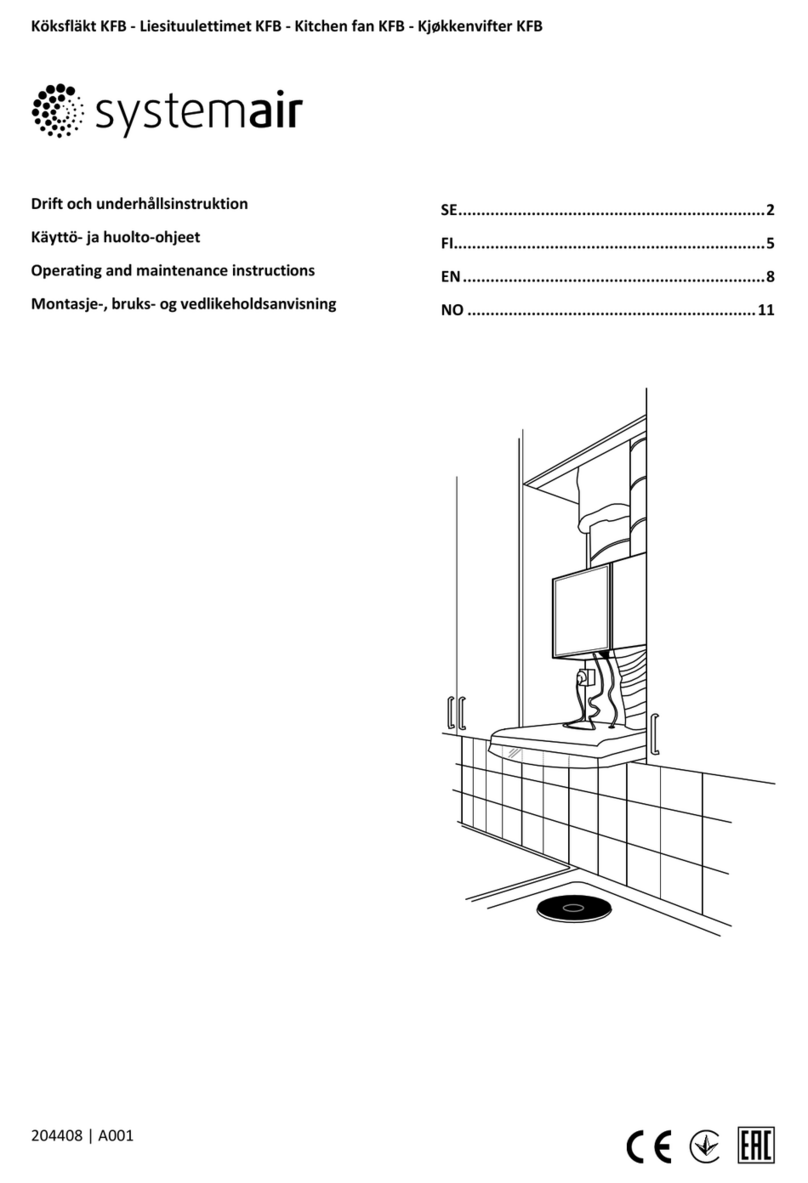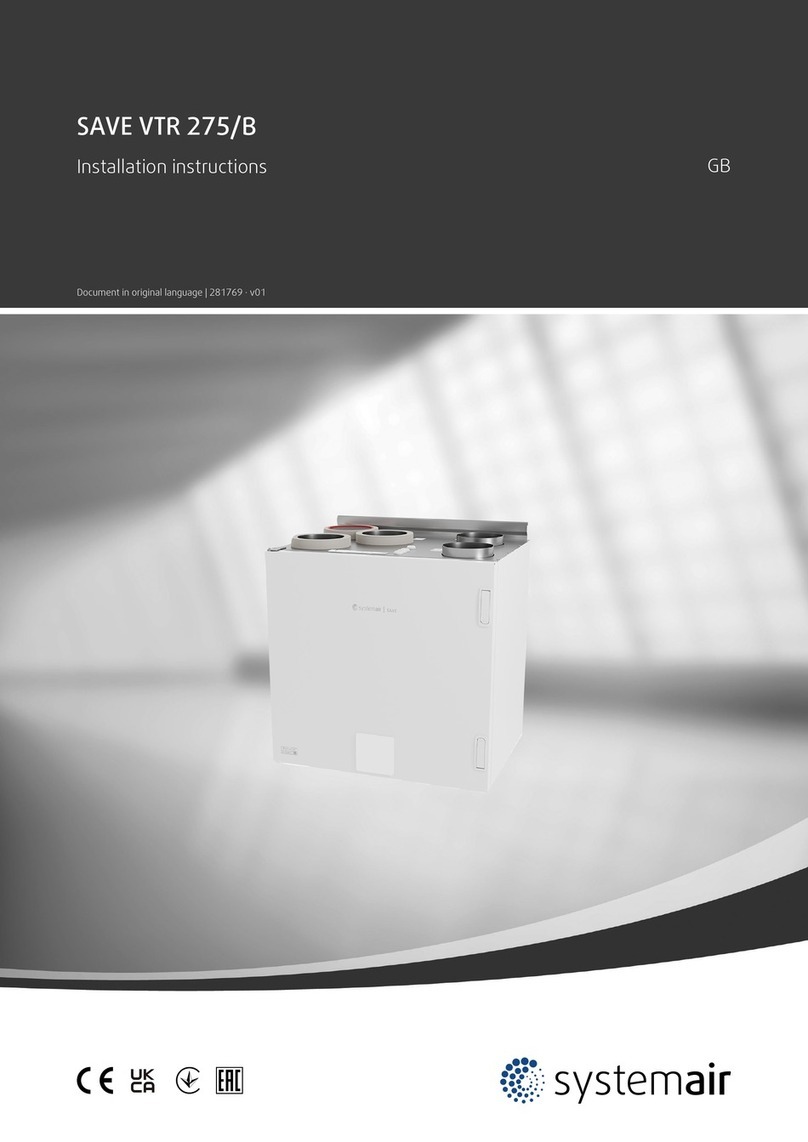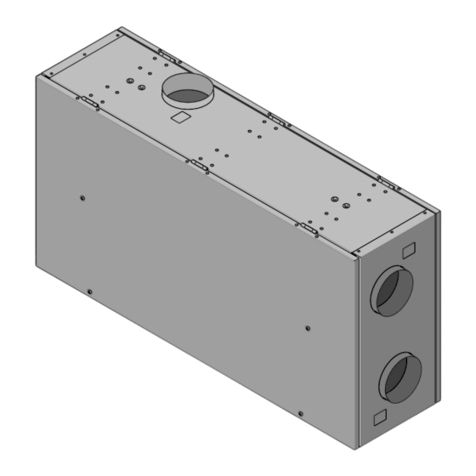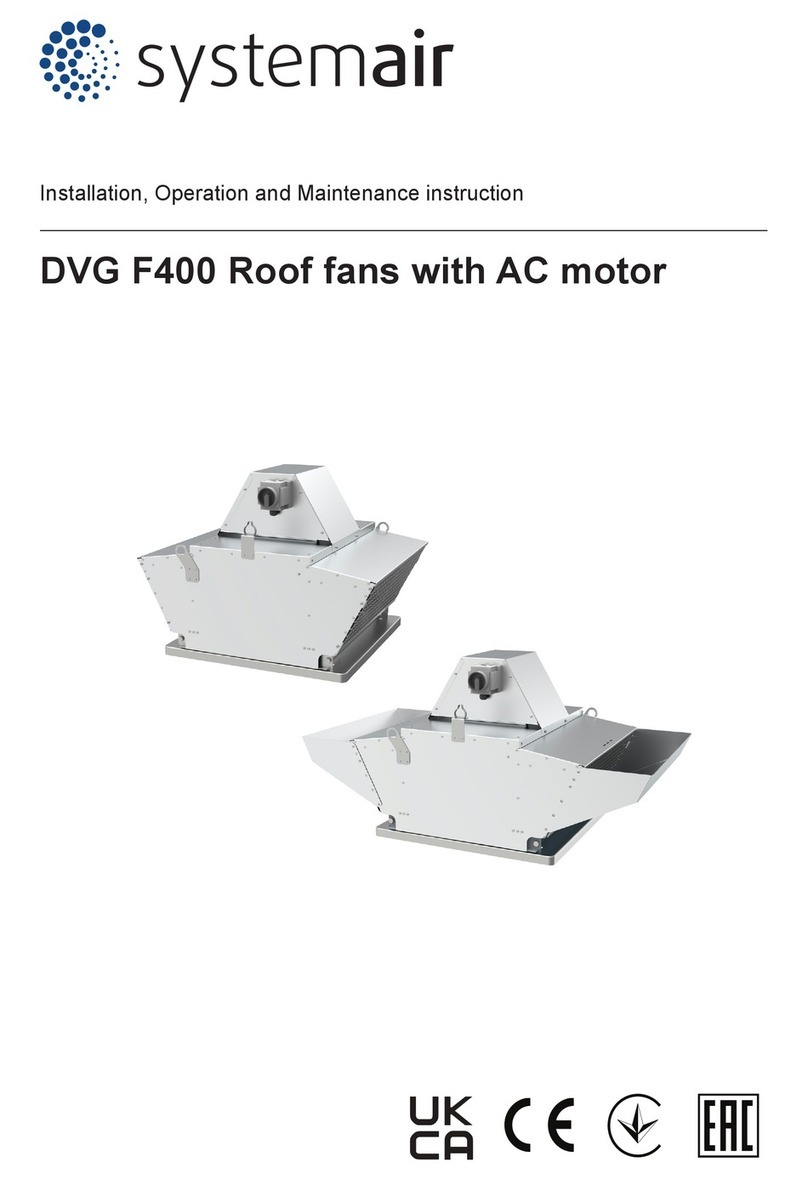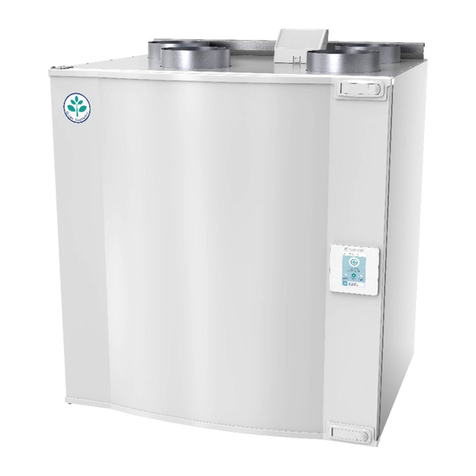
7
•Assembling of the fan (fixing, eventual deformations) and joints for leakage;
•Check if foreign objects were removed from the fan and connected ducts;
•Check if protective elements are fitted;
•Check the accuracy of the electric wiring and connections to the mains.
The fans type DVV-Ex (DVVI-Ex) can be started only, if they are built-in to the ventilation system, and if the safety is ensured by
protective grid (EN 294) or on another proper way.
Then start the fan for a short period and switch it off again to check the direction of rotation, while the impeller slowly rotating. It has to
comply with the direction of the arrow on the casing of the fan. The direction of rotation can be observed through a opening on casing. It is
couter clockwise, when one sees into the outlet.
Protective glasses are needed to avoid any injury of eyes (danger of remains or dust from the fan). If the direction of rotation is
wrong, change the supply connection of two phases.
Re-start the device and check it for proper operation (smoothly rotating impeller, current at all speeds, eventual vibrations, noise). Fill in
attached test protocol and file it.
6.0 APPROVAL
It is particularly important to prove the proper function of system and control devices as well as accordance with requirements of
the project and regulations. All tests should be recorded and the documents filed.
7.0 MAINTENANCE AND PERIODIC CONTROL
Unintended start-up during installing, controlling, maintenance or repair has to be prevented!
The impeller is accessible by dismounting one half of the casing opposite to the connection box of the fan.
The following must be controlled periodically (once a year at least, more frequently depending on operating conditions):
1. Check if screws between impeller and hub got loose and tighten them if needed; check the junction between shaft and hub;
2. Remove dirt from the fan impeller if there is any (hazard of static charge and unbalance);
3. Check the functionality of protective devices;
4. Check the functionality of control devices;
5. Winding resistance;
6. Current during operation;
13. Protection against electric current hazard, static earthing;
14. Noise which might appear in el. motor bearings;
15. Eventual vibrations;
16. Inspection of inscriptions, warnings and markings;
17. Inspection of negative influences of environment on the product (dust, steam etc.).
18. Clean the water drain openings between the fan base and the fan casing; it is especially important at the type DVVI-Ex, where the
drains on the part of base plate serve to noise reduction. In case of exposure to foliation, pins or exhaust of greasy air clean
drains more frequent.
The function of the system and control devices (all poles) has to be checked according to system maintenance book, minimum every 3
months. Checking points 1 to 3 and 10 to 12 can be done only if the supply voltage is switched off.
Parameters of the items 4 to 9 must not deviate from the starting values (at installation). In case that one of the parameters deviate, the
electric motor or impeller have to be replaced or repaired. This can be accomplished only by a service, authorised by the manufacturer. In
the opposite case the manufacturer's guarantee is not valid any longer. The electric motor has to be maintained according to the attached
instructions of the electric motor manufacturer.
8.0 MALFUNCTIONS
At all inspections point 4.2 must be observed. Possible malfunctions and solutions:
•The fan does not operate.
Check connection to the mains and thermal protection. If ok. check electric motor. If a motor with separated windings is installed, check all
speeds. . If necessary get the electric motor repaired.
•Air volume is too low.
Check the direction of rotation. If wrong, change the supply connection of any 2 phases. If ok. check operating point and system design.
•Thermal protection switches off.
Compare the data of electric motor. If ok. check power supply and electric motor (short-circuit, damage to the bearings, impeller blocked or
touching the casing ). Get the electric motor or if necessary complete fan repaired.
•Noise.
Damage to the bearings, impeller blocked or touching the casing. Get the electric motor or if necessary complete fan repaired.
•Vibrations.
Check operating point and system design. If the actual pressure drop of the system is higher than supposed, the fan could operate in an
instable area of the fan curve. Inform customer service of the manufacturer.
•Vibrations.
Damage or dust layer on impeller. Clean the impeller, if necessary balance it or replace it.
If the reason of malfunction can not be clearly determined, inform the customer service of the manufacturer.
7.0 GUARANTEE
Guarantee will be valid only if transport, storage, installation, connection and periodical maintenance have been executed in compliance
with above instructions as well as with the valid electric-installation prescriptions. If guarantee claims are forwarded to the manufacturer, the
duly fillled and signed test protocol has to be submitted. It is very important that the installation of the fan is done with all necessary care, to
ensure uninterrupted and safe operation.
Enclosure: Guarantee, test protocol, declaration of conformity

